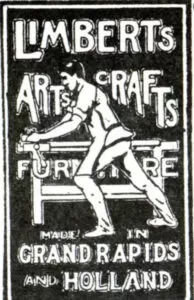Learn About Cuerda Seca Ceramic Technique and The Lamps of Limbert in February!
by Kate Nixon
Arts and Crafts Show Demonstrations – included in Show admission!

Cuerda-Seca: Linear Arts and Crafts Ceramic Techniques
 The Lamps of Limbert: For the First Time—Electric!
The Lamps of Limbert: For the First Time—Electric!
with Dave Van Epps of NorthWoods Restorations
The turn of the twentieth century was not only the beginning of the popular interest in Arts & Crafts furniture but also the beginning of the domestic use of electricity in the United States. Because electricity in a home was still largely a curiosity for much of the Arts Crafts period many of the lamps offered were oil lamps, however, Charles Limbert and others did produce some electric lamps of wood. Many of the lamps in his line were hammered copper. In these 20 minute sessions, attendees can learn about the construction and style of the wooden lamps Limbert made. Each session will include an opportunity for questions and informal discussion.
David has been a collector and builder of Arts & Crafts style furniture for more than fifty years. He has spent many hours researching the history, construction techniques, and design elements of the period, with special emphasis on his particular passion, the “Holland Dutch Arts & Crafts” furniture of Charles Limbert.
